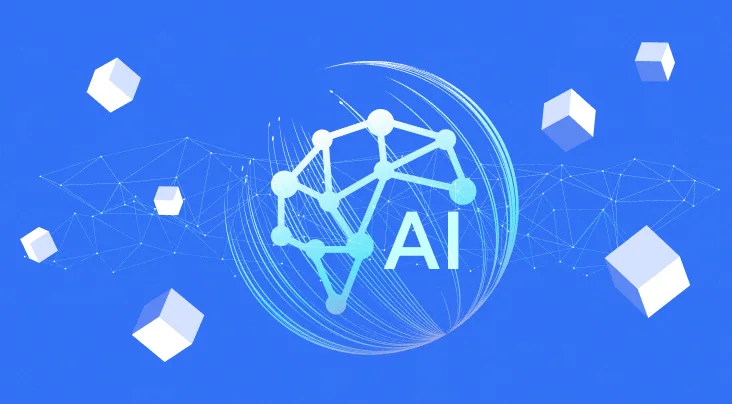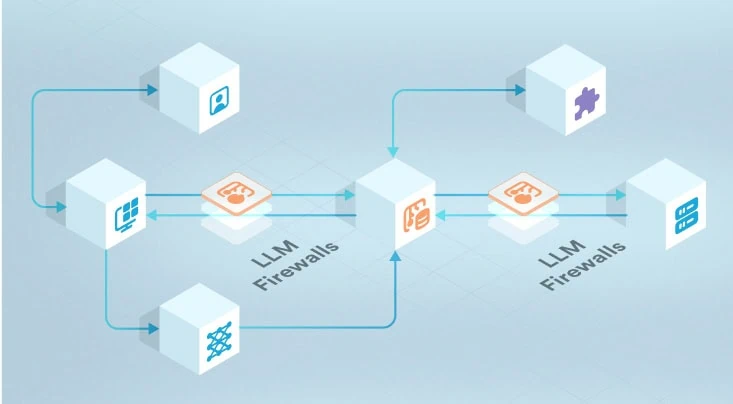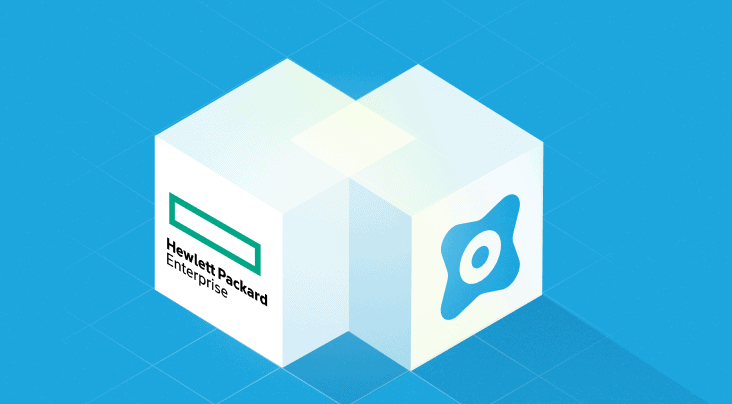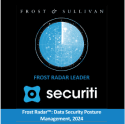In my time at Securiti, I’ve had the chance to speak with a lot of clients and prospects, listening to their successes, hearing how they’re challenging themselves to expand their businesses, and helping them bring a more secure, better-governed data footprint to their companies. The technical aspects of their jobs are somewhat straightforward: select a vendor or strategy, test and implement the products, and measure the results.
Many, however, still feel that the achievements that come from their efforts fall short of what they know is possible — and increasingly so, especially when it comes to products like generative AI — and they long to move to even bigger deployments. I can’t tell you how many times I’ve heard from technology teams, “if we could only get those in charge to understand….”
So, while staring out the window on a long flight back from the UK, I decided to put down some thoughts about how executive teams think, why they are actually interested in knowing more about how to use data, and how data teams — whether CDOs, CIOs, or functional groups within a company — are vital to any company’s success, today and in the future. We’ll look at the challenges of the collective C-suite (or the proverbial “CXO,” where “X” is a stand-in for insert-business-division-here) and examine some of the real, often highly personal, pressures and considerations they’re facing.
“Why can’t they see they are missing an opportunity?”
Throughout my career, I’ve had the opportunity to work with and advise many Fortune 500 executive teams, often looking at how to transform their companies, their businesses, or their workforces to gain a competitive advantage or — in the case of government or medical clients — meet their organization’s objectives. Thankfully, the technology and products have not failed us, leading to at least moderate, often significant, strides in the direction of future progress.
But to be clear, the product or technology of the time was never the single key to successful implementation, to say nothing of company transformation. Making progress toward these milestones, or indicators of success, takes people making an educated bet — whether on the vendor, their own teams, or the concept. They may choose to start slowly or go full-tilt with a multi-million dollar program. Regardless, at whatever point their decision goes from “nice tool” to company transformation, they’re making a career decision that has implications for them on many levels, professionally and personally. Data and AI programs are no different: when significant monies — and, more importantly, opportunity costs — are dealt out, someone is taking a potentially life-changing risk that can affect both them and, by extension, many people who work with them.
“But everyone is doing AI!”
It’s well-known that many companies that disrupted their industries with new distribution, products, and concepts did so — at least partly — through the use of AI. Amazon has robots filling boxes, Spotify wraps your yearly listening choices into a truly personalized message, and Tesla just eliminated the last C++ from their self-driving algorithms.
But now we’re seeing the ”disruptive” distinction that was once the exclusive territory of the fancy, AI-enabled tech companies trickle down to the more business-as-usual companies in the more “everyday” industries. With the Mayo Clinic getting OpenAI’s GPT into the hands of their doctors and nurses, law firms redefining how to practice law (don’t ask how the billable hours are going to work), and Morgan Stanley kicking off the generative AI era on Wall Street, it’s safe to say that the times, they are a-changin’.
Tons of headlines. No one wants to be left behind. No one wants to be the next Blockbuster (although you can still visit the last Blockbuster in Bend, Oregon, and the reviews are awesome!). Or Sears. Or Kodak. Or Nokia (personally close to the heart). No one wants to be on this list. Not a single one of these companies’ issues was due to technology per se, but rather by not embracing how business models would change once technology became more central to the big picture. Their issues were due to inflexibility and an inability to adapt.
At the end of the day, however, the company’s board wants to see action. The CEO is under immense pressure to deliver. And if you’re one of my fellow CDOs, you’re catching the brunt of it, along with your partners, the CISO, the CIO, and usually the CPO. Great. So now what?
“Innovation is a career-ender”
Pretty blunt, huh? Also, pretty simplistic. While it’s not exactly the case, there’s a reason why a lot of people — particularly those climbing the corporate ladder — think this way. It’s not that they don’t want to innovate, but rather they are pretty busy in their day-to-day jobs, managing and (hopefully) growing a business that has been decently successful (or at least to the $7B annual revenue point that is the cutoff for a Fortune 500). And the implications of not actively managing their company or fulfilling their daily responsibilities can be significant.
But it is a balance that a company’s executive leadership needs to learn to work through. It may sound great to decide to invest $1B in a new initiative, but then what stops? Or, more importantly, how can it be done in a way that allows you to balance all the risks and threats of failing. If, for example, a great new capability creates a legal issue on the side, is it worth it? Again, a C-suite executive has a lot at stake based on a history that rewards a string of successes, politically “smart moves” — and not much else.
And while you (and I), who work in the data world, are walking in with great ideas about data, think about the executives who are, in parallel, reading headlines that say: do AI, but don’t do what these people did. These executives’ jobs are to run their respective businesses. Their respective businesses run on data. The data must flow. If it doesn’t, people do not board flights. Gas does not get delivered. Patients do not get treated. Mortgages do not get processed. And any company — even the companies we most rely on — can be breached.
And while executives are trying to grasp the broader implications of generative AI on their business and their career — plus even understanding what AGI is — they are simultaneously processing an avalanche of information about regulations, codes of ethics and business conduct, and the White House AI Executive Order. A far cry from falling for “innovation is a career ender” hook, line, and sinker, this is all enough to make anyone pause.
“Nothing personal; it’s business”
I’m not a fan of this phrase. Believe it or not, like it or not, business is personal. We spend more time with the people we work with than we do our friends — and often even our family. I’ve traveled the world with my wife and family, but also with people on business going to places like Shanghai, Yerevan, and 29 Palms. It’s always personal when you work — and there’s nothing that underscores that reality better than risk.
One of the most recent items that has caught the attention of CISOs and CDOs is that individuals can be found criminally liable for not being forthcoming in their information and systems — particularly after a cyberattack. Cyber is now a board-level objective for all US companies, and the SEC is clear about reporting requirements for breaches in new rules that have just taken effect. AI breaches and data issues are sure to follow a similar pattern — and basically any issue that is board-level in a company will have similar implications should it not be handled correctly. Not to even mention the potential loss of value for public and private companies from an AI or data breach, ranging from 20% to 40% of value — not including all of the direct costs associated.
If you are on a board — or if you are a private equity firm managing a portfolio — these threats are enough to make a data or AI attack very personal indeed. Again, it is business, and their role is to balance the risks and rewards of making things happen.
Another personal concern involves the ability of GenAI to take in-depth knowledge and, in effect, commoditize and leverage it in the place of skilled labor, Doomsdayers may not represent the full picture, but there is little doubt, according to more balanced reports, that many jobs could change or be replaced.
Let’s shift perspective for a moment and consider the personal side of adoption-gone-wrong: What if decision makers in the C-suite change their business to depend on AI and data, reallocating their workforce, and something fails or goes awry? What happens if your company reduces their customer-facing support team by 50% and then has to turn off the AI tools because they malfunction??? What happens if, in essence, the data stops flowing? Will the company survive?
TLDR: When shaping your data + AI story, try to think like the CXO
The C-suite is constantly parsing through all of this information — plus the thousands of other things going on in their business — to solve problems that are best for the future goals of the company, and all the people within the company. When shaping your data + AI story, consider how you can help them work toward those goals with real metrics and systems that show that you are in command, and they are in command, so they have the confidence to move quickly and take aggressive steps forward.
It all comes back to ensuring you have the best platform for data and AI governance, security, and privacy — and that all of the different groups and stakeholders have a shared understanding and view on both the advantages and the risks. And if this initial cut got you a little discouraged about the challenges, spend a few minutes on Timo Elliott’s excellent collection of AI cartoons ... the analytics ones are pretty good too! As always, let us know if you’d like to talk through your company’s AI stance, and we’ll be happy to help.














